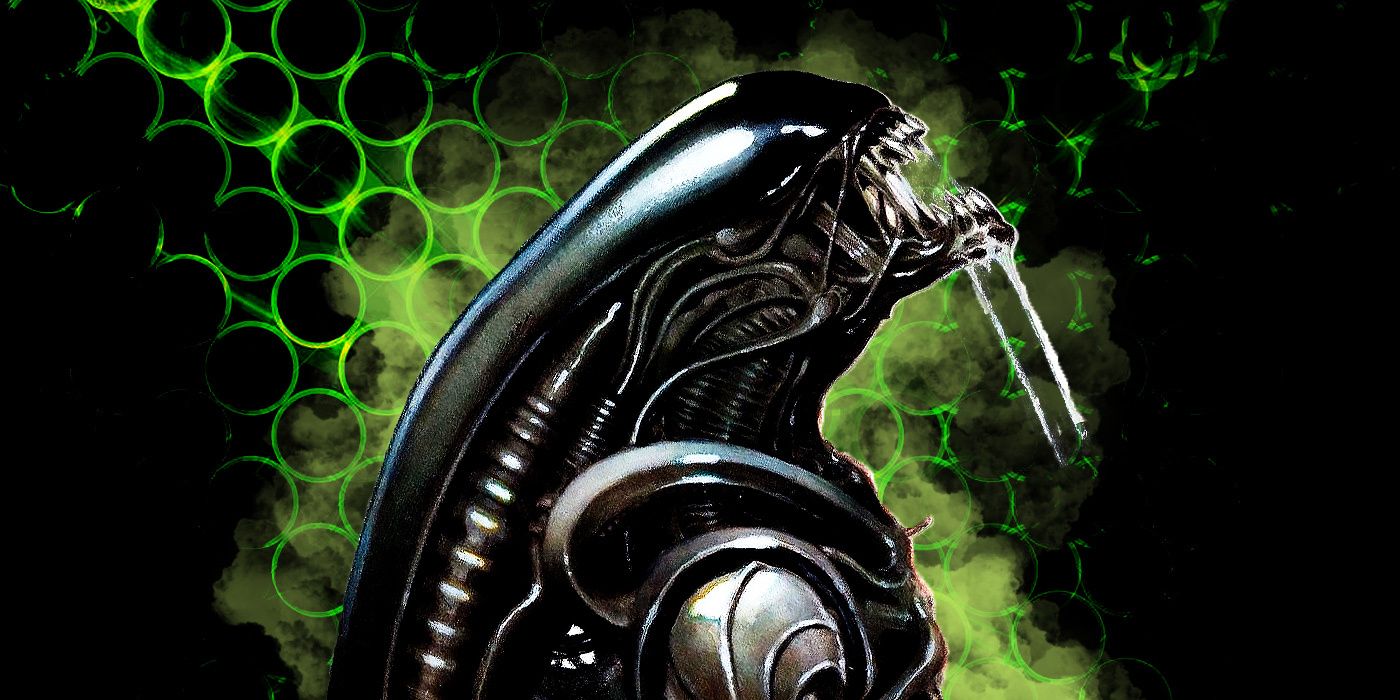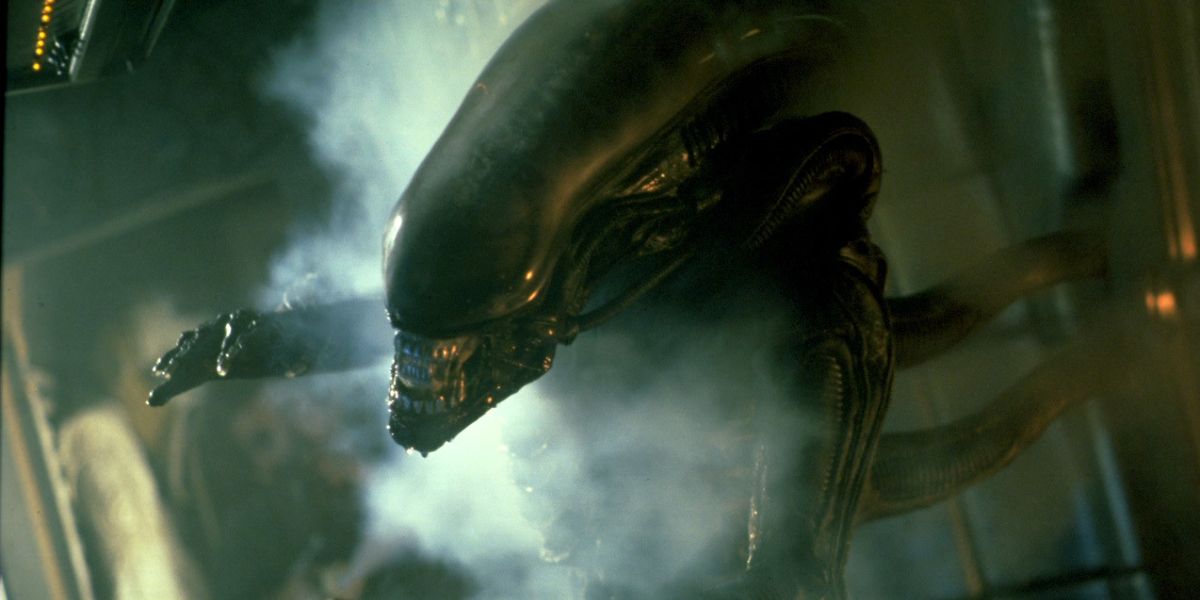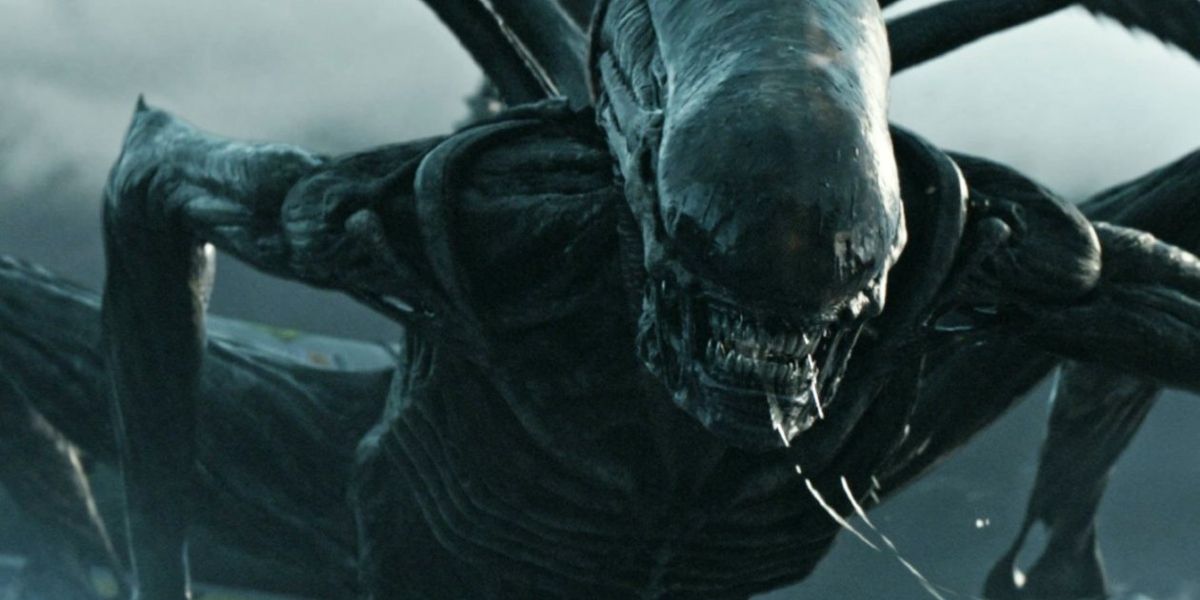One of the most contested aspects of the Alien franchise may be one that the typical viewer isn't familiar with. During the production of the original Alien, a scene was shot before being subsequently cut at Ridley Scott's request. This scene followed the film's protagonist Ellen Ripley (Sigourney Weaver) climbing through the bowels of the USCSS Nostromo, flamethrower in hand and the titular alien Xenomorph stalking her. As she enters the hold, she discovers a massive cluster of hardened resin spread throughout the walls and floor. As she investigates the grotesque bile, she notices two people inside, secured to the wall and incapable of moving. Captain Dallas (Tom Skerritt) is alive but has clearly had enough of the terror he experienced. He begs Ripley to end his misery despite her protestations that she can still save him. He groans out his request, barely clinging to consciousness, and Ripley remains apprehensive.
As Ripley looks around the hold, she notices the second figure held in the resin. Brett (Harry Dean Stanton) is completely encased in the strange paste. Below him appears to be one of the alien's many eggs, partially encompassing Brett's body. Fearing that Dallas will meet the same fate as Brett clearly has, Ripley uses her flamethrower to torch the resin, killing Dallas and sparing him the horror of being absorbed into a Xenomorph egg. Though this scene was initially cut due to Scott believing that it slowed down the film's final act, it would return in other places.
Following Alien's release, the scene now known as the "Eggmorphing" scene has persisted in the film's novelization. Furthermore, the scene appears in the behind-the-scenes book The Book of Alien, the promo magazine The Officially Authorized Magazine of the Movie Alien, and was even discussed in the book Giger's Alien. It was even featured on laserdisc alongside many other deleted scenes for the film, making an indelible mark on the psyches of the film's fans. This stamp on the film's legacy would persist, leading to the scene being included in many home releases of Alien and even making it into the film's 2003 director's cut in an altered capacity.
But why is it a big part of Alien's discourse among its fans? Put plainly, it throws a substantial monkey wrench into the understanding of the Xenomorph's life cycle. By presenting this seemingly alternative form of reproduction for the Xenomorph, the Eggmorphing scene calls into question several aspects of Alien's established understanding of its infamous killing machine. From Aliens (1986) to Prometheus (2012) and even Alien: Covenant (2017), the origin of Xenomorph eggs and how they are made now points back to multiple sources.
James Cameron sought to address this issue when he began production on Aliens, eventually implementing the Xenomorph Queen to address where eggs came from. Likewise, in Alien: Covenant, the android David (Michael Fassbender) is capable of using the black liquid originally found in Prometheus to bio-engineer eggs and birth the presumptive first Xenomorph from it. At the same time, the Eggmorphing scene in Alien, even though it was deleted, has persisted in enough versions of the original film to take on its own answer to the chicken/egg quandary as well.
For what it's worth, before the prequel films came along, the 1992 novelization of Alien³ attempted to address Eggmorphing. The book points to the Queen and Eggmorphing both as reliable means of reproduction that can be relied upon depending on the circumstances. That still leaves a considerable question: If every Xenomorph drone can create eggs from both living and dead matter like the one on the Nostromo did, what all use does a Queen serve as a reproductive anchor for the species? This has largely been sidestepped by official materials, with only peripheral materials such as comic books and a tabletop roleplaying game attempting to explain things away (the game states that Queen eggs take less time to produce and are sturdier). The Alien³ novelization also implied that Eggmorphing may have been used to create Queens, to begin with, but then why would the Xenomorph aboard the Nostromo attempt to create two eggs?
So is Eggmorphing a legitimate means of reproduction? It depends on who you ask. Many fans have dismissed the deleted scene since it didn't make the theatrical cut of Alien. To these fans, the concept of Eggmorphing is more of a sloppy retcon than anything, with different mediums in the franchise attempting to tie together loose ends. Other fans swear by the Eggmorphing scene's legitimacy due to its staying power and the fact that it continues to be referenced in the franchise's media. At the end of the day, the conventional sense of Xenomorph egg creation tends to win out due to the massive success of Aliens and the Queen's presence as a figurehead in that film.
The creation of Xeno eggs will likely be a debated topic going well into future years as long as 20th Century Studios/The Walt Disney Company continues to roll out Alien content. Are the eggs laid by a Queen? Are they molded from individual drones? Are they the product of black goo once weaponized by the enigmatic Engineers? Perhaps all three are true, but most major sources have been mum on distinguishing the different methods.
But does this matter so much to warrant having a debate over it? Many Alien fans would likely say yes. One of the biggest draws of the Xenomorph is its bizarre life cycle and means of adapting to any environment. The way that it continues to propagate its species matters specifically because the way it is born into the world is so incredibly otherworldly. It also calls into question the way that the Xenomorph has been able to extend into the stars, infesting hundreds of terrestrial worlds. If Xenos don't need a Queen to overtake a given world and could simply Eggmorph their prey, wouldn't that be much more useful than taking the time to gestate and create a Queen? Eggmorphing introduces a wide web of lore contradictions unless it is considered illegitimate by the fandom or those who have had a major hand in the franchise's success.
Until there's some substantial clarification for the fandom, the deleted Eggmorphing scene may have inadvertently become the "Han/Greedo shot first" of one of horror and sci-fi's most iconic franchises. When Ridley Scott excised the scene from the original film, he likely had no idea how much significance it would go on to have decades after Alien's premiere. We may never get concrete answers about which egg production methods are legit and which are just extended universe fluff, but it makes for enjoyable conversation between Alien fans everywhere.



